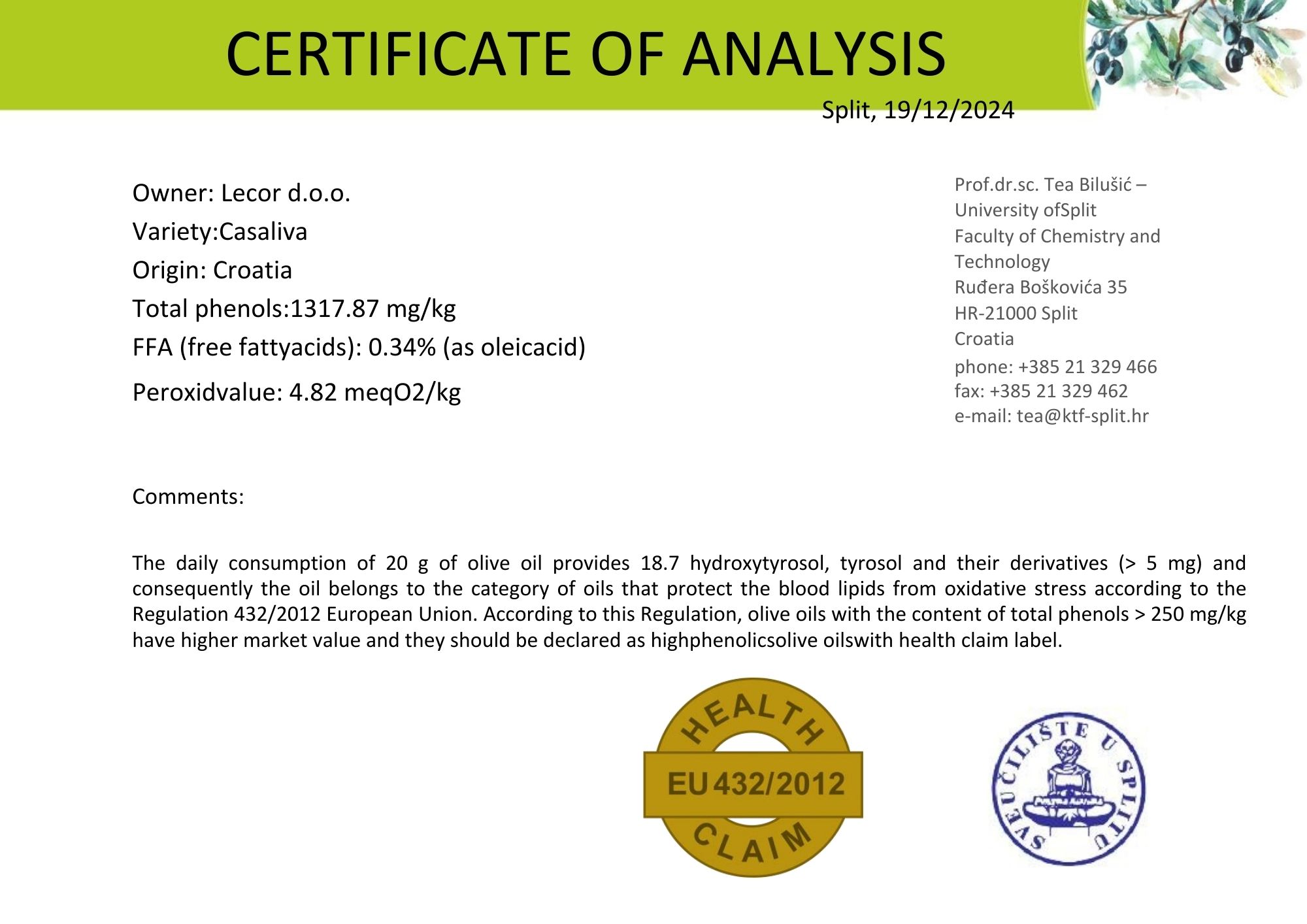2024 olive harvest, oil chemical analysis

Our 2024 Harvest Polyphenols 1300mg/kg, Oleic Acid 0.3%, Peroxide 4.00 meq O2/kg
Polyphenols are powerful antioxidants that help reduce oxidative stress, protect against heart disease, and support healthy aging. Oleic Acid reduces cholesterol and prevents cardiovascular disease. Low Peroxide indicates the oil is fresh, tasty and all the goodness retained.
The polyphenols in olive oil are almost unique to olive oil and exceptionally powerful anti-oxidants. Foods like some berries, tea, coffee, and dark chocolate can have higher polyphenol concentrations per serving but less effective polyphenols.
Key polyphenols in olive oil, either solely or almost solely found in olive oil, include:
Hydroxytyrosol: Known for its potent antioxidant and anti-inflammatory effects, helping protect against heart disease and aging.
Oleuropein: Offers strong antioxidant properties, supports cardiovascular health, and has antimicrobial benefits.
Oleocanthal: A powerful anti-inflammatory polyphenol with effects similar to ibuprofen, helping reduce inflammation, protect the brain, and possibly reduce the risk of Alzheimer’s disease.
Verbascoside: Another antioxidant that helps fight oxidative stress and supports immune health.
Monounsaturated Fatty Acids (Oleic Acid)
What they do: Oleic acid is the main fatty acid in olive oil, making up 70-80% of its composition. It lowers bad LDL cholesterol and raises good HDL cholesterol, supporting heart health. Oleic acid also has anti-inflammatory properties and can improve insulin sensitivity, promoting better blood sugar control. The synergistic effect of oleic acid and polyphenols gives olive oil a unique and effective combination of nutrients and bioactive compounds.
Combining oleic acid (a monounsaturated fat) and polyphenols (including oleocanthal) in olive oil creates a synergistic effect that enhances antioxidant performance beyond the sum of their individual effects. Here’s how:
- Improved Absorption: Oleic acid helps increase the absorption of fat-soluble polyphenols, such as oleocanthal, into the bloodstream.
- Amplified Antioxidant Activity: Oleic acid stabilizes cell membranes, while polyphenols like oleocanthal neutralize free radicals, providing a more comprehensive antioxidant defense.
- Protection Against Oxidation: Oleocanthal prevents lipid peroxidation (damage to fats), while oleic acid helps maintain healthy fats, ensuring better cellular protection.
- Enhanced Anti-inflammatory Effects: Oleic acid reduces inflammation, while oleocanthal inhibits key enzymes involved in inflammation, making the combined effect stronger.
Together, these compounds work more effectively to protect against oxidative stress, inflammation, and related diseases, making the benefits greater than when they act separately.
Vitamin E (Tocopherols)
What it does: Vitamin E is a potent antioxidant that protects cells from oxidative damage. It helps prevent premature skin aging, supports immune function, and plays a role in maintaining healthy blood circulation. Its antioxidant properties also help prevent heart disease and support overall health.
Phytosterols
What they do: Phytosterols are plant compounds that help lower cholesterol levels by inhibiting its absorption in the intestines. They also offer anti-inflammatory benefits and may help reduce the risk of cardiovascular disease.